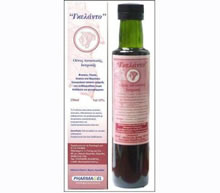
Dictionary of Allergies .. Phototoxic and photoallergic reactions
Phototoxic and photoallergic reactions
Photoinduced reactions produced by exogenous chemicals are common skin disorders. Upon interaction of solar UV radiation with the chemical that is present in significant levels on the skin, one of two known reactions may occur in susceptible patients: a phototoxicity and/or photoallergy. Phototoxic and photoallergic reactions can be diagnosed separately on the basis of pathogenesis, clinical characteristics, and histology.
Examples of drugs capable of inducing a phototoxic reaction include amiodarone, retinoids, nonsteroidal antiinflammatory agents, diuretics, and antibiotics. Substances known to cause a photoallergic response are fragrances, sunscreens, topical antimicrobials, NSAID, and psychiatric medications, such as chlorpromazine.
Definitive therapy requires identifying and removing the offending agent, either the photosensitizing chemical or light. The use of fully protective clothing and a sunscreen of high SPF are important measures when light exposure is inevitable.
References
Lankerani L, Baron ED. Photosensitivity to exogenous agents. J Cutan Med Surg.2004 Nov-Dec;8(6):424-31.
Γκέλης Ν.Δ. - Λεξικό Αλλεργίας - Εκδόσεις ΒΕΛΛΕΡOΦΟΝΤΗΣ - Κόρινθος 2013
Gelis Ν.D. - Dictionary of Allergies - VELLEROFONTIS Publications - Corinth 2013




